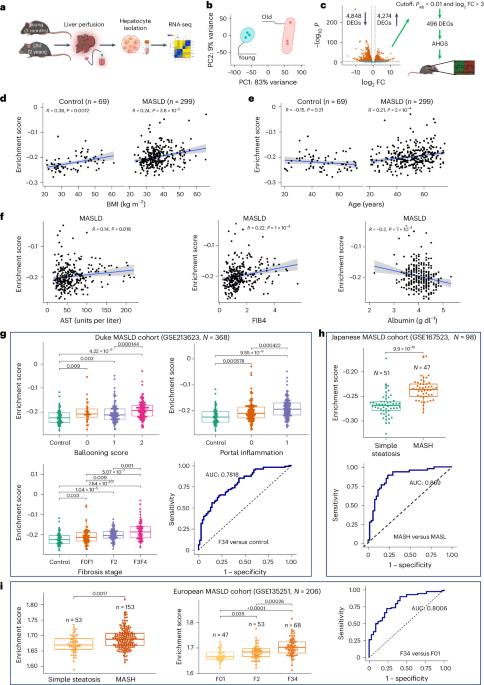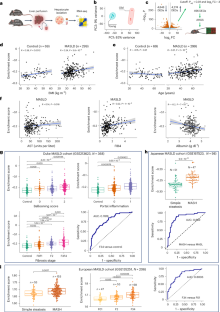Aging promotes metabolic dysfunction-associated steatotic liver disease by inducing ferroptotic stress
IF 17
Q1 CELL BIOLOGY
引用次数: 0
Abstract
Susceptibility to the biological consequences of aging varies among organs and individuals. We analyzed hepatocyte transcriptomes of healthy young and aged male mice to generate an aging hepatocyte gene signature, used it to deconvolute transcriptomic data from humans and mice with metabolic dysfunction-associated liver disease, validated findings with functional studies in mice and applied the signature to transcriptomic data from other organs to determine whether aging-sensitive degenerative mechanisms are conserved. We discovered that the signature enriches in diseased livers in parallel with degeneration. It is also enriched in failing human hearts, diseased kidneys and pancreatic islets from individuals with diabetes. The signature includes genes that control ferroptosis. Aged mice develop more hepatocyte ferroptosis and liver degeneration than young mice when fed diets that induce metabolic stress. Inhibiting ferroptosis shifts the liver transcriptome of old mice toward that of young mice and reverses aging-exacerbated liver damage, identifying ferroptosis as a tractable, conserved mechanism for aging-related tissue degeneration. The mechanisms underlying susceptibility to metabolic dysfunction-associated steatotic liver disease (MASLD) in aging are incompletely understood. Here the authors show that an aging hepatocyte gene signature is enriched in MASLD liver tissue and contains ferroptosis genes. Experiments in mice show that metabolic stress increases ferroptosis in liver tissue in old compared to young animals and that blocking ferroptosis in old animals reduces the susceptibility to metabolic stress.


衰老通过诱导铁蛋白应激,促进代谢功能障碍相关的脂肪性肝病。
不同器官和个体对衰老生物学后果的易感性各不相同。我们分析了健康年轻雄性小鼠和老年雄性小鼠的肝细胞转录组,生成了衰老肝细胞基因特征,并将其用于解构人类和代谢功能障碍相关肝病小鼠的转录组数据,通过小鼠功能研究验证了研究结果,并将该特征应用于其他器官的转录组数据,以确定对衰老敏感的退化机制是否是保守的。我们发现,在退化的同时,病变肝脏也富集了该特征。衰竭的人类心脏、病变的肾脏和糖尿病患者的胰岛也富集了这一特征。该特征包括控制铁变态反应的基因。与年轻小鼠相比,老年小鼠在喂食诱发代谢压力的食物时,会出现更多的肝细胞铁蛋白沉着和肝脏变性。抑制铁蛋白沉积会使老年小鼠的肝脏转录组向年轻小鼠的转录组转变,并逆转衰老加剧的肝损伤,从而确定铁蛋白沉积是衰老相关组织变性的一种可控、保守的机制。
本文章由计算机程序翻译,如有差异,请以英文原文为准。
求助全文
约1分钟内获得全文
求助全文

 求助内容:
求助内容: 应助结果提醒方式:
应助结果提醒方式:


